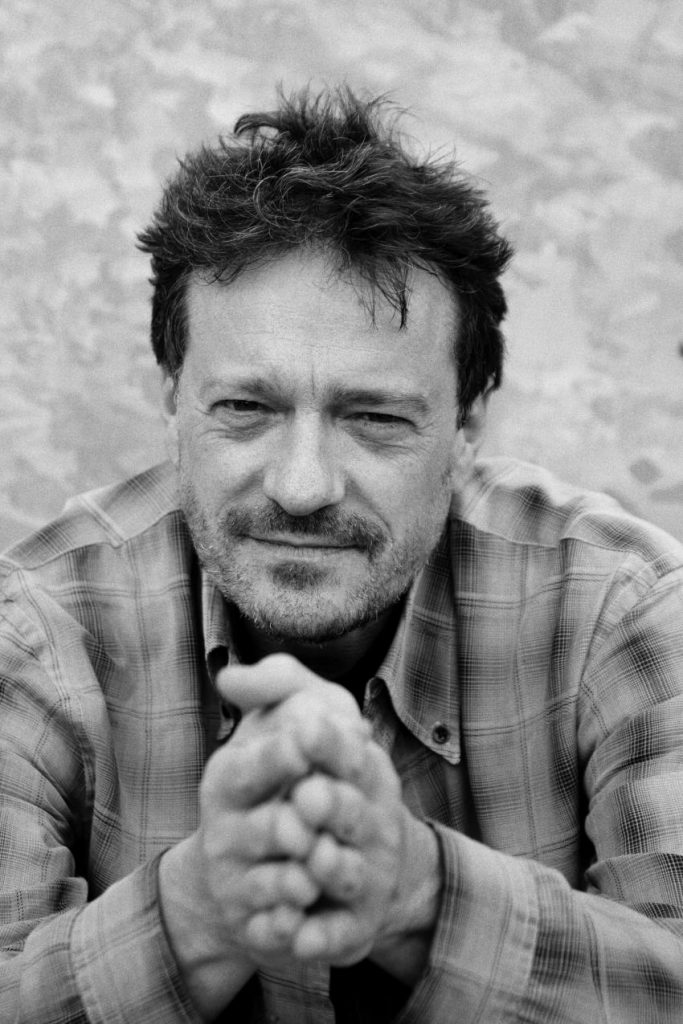Alsop, BSO members mix it up with flair in New Music Festival

Thierry de Mey’s “Musique de table” was performed at the Baltimore Symphony Orchestra’s New Music Festival Thursday night. Photo: Thibault Gregoire
While Marin Alsop gained an early reputation as a specialist in contemporary music, she has stinted on that repertory in her subscription programs with the Baltimore Symphony Orchestra over the last decade. The BSO music director has found ways to present music of living composers in special programs, including her New Music Festival, which was inaugurated last summer. The festival opened its second edition with a chamber music concert Thursday night at the Peabody Institute’s Griswold Hall.
Most of the performers on the program were members of the BSO, but the concert opened with three guest percussionists in Thierry de Mey’s Musique de table. Matt Keown and Jeff Stern sat on either side of player Svet Stoyanov, beautifully coordinating the various strikes on three boards set on the table before them. In graceful fingernail scrapes and side-hand brushes on the boards, they matched each other in terms of spatial curve and hand shape.
The Belgian composer was first a filmmaker, and thus the piece is equal parts music and choreography of movement, a sort of one-upping of works like Steve Reich’s Clapping Music or Music for Pieces of Wood. The performers also added an element of fun in the balletic movements of hands and heads, and especially with the pauses for theatrical page turns.
Du Yun, the Shanghai-born winner of the 2017 Pulitzer Prize for her opera Angel’s Bone, is now on the faculty at the Peabody Institute. One of the three composers on hand to introduce their work, she explained her inspiration for Tattooed in Snow, a string quartet premiered in 2015.
The four instruments, spread apart as far as the small performance space would allow, recalled the sound of the call to prayer reverberating from all quarters of Cairo. Three string players from the BSO and cellist Inbal Segev, who is co-curating this year’s festival, traded a motif recalling folk-music cantillation back and forth. (Segev and her husband Thomas Brener, have sponsored both years of the BSO’s New Music Festival.) More modern techniques, buzzing tremolos and moaning glissandi, pervaded the work, as did microtonal bends, creating an eerie atmosphere.
That spirit matched the puzzling video by Lu Yang, accompanying the middle section of the work, which showed a man being transformed into a Japanese anime monster. Far more interesting was the contrapuntal music quoted by the composer, familiar but elusive, and obscured with more cantillation techniques.
By contrast, Dan Visconti’s Black Bend seemed less an adaptation of vernacular music than a simple iteration of it. Starting in a dissonant vein, the piece morphed into a rather effective blues for string quintet, an evocation of a haunted bend along Ohio’s Cuyahoga River, according to the composer.
Segev and Stoyanov, on marimba, gave an earnest performance of the original version of Osvaldo Golijov’s Mariel, composed after the sudden death of a friend. Premiered in 1999, the work still struck the ear as saccharine and derivative. Stoyanov exploited Golijov’s expressive use of the marimba, in balalaika-like tremolos with strong dynamic shaping, joined by the more vocal line of Segev’s cello. The two instruments traded their motifs in the middle section..
Alsop continued her championship of the work of Scottish composer James MacMillan, conducting the original 1989 version of his The Exorcism of Rio Sumpúl, for 14-member chamber orchestra. Violent interjections, led by a palpitation-inducing tocsin of anvil strikes (Stoyanov again), punctuated the first movement, depicting a military helicopter assault on a small village in the El Salvadoran valley of the title. A stunned suspended harmony from the other instruments gave the impression of slow-motion horror.
Horn players Phil Munds and Austin Larson were emphatic on the high, panicked calls, and flutist Marcia Kämper flutter-tongued her way through her anxious solo, shadowed by glints of glockenspiel. The middle movement, lush clouds of strings and low woodwinds, murmured reflectively, tinged by rumbles of gong and other percussion.
In the finale all of the motifs of the attack came back, a depiction of the mocking “helicopter dance,” led by the village priest as an exorcism of the attack for the terrified children. The work culminated in a crazed unison melody, repeated in an antiphonal call and response format by both sides of the ensemble.
The BSO’s second New Music Festival continues Friday and Saturday. bsomusic.org; 410-783-8000.
